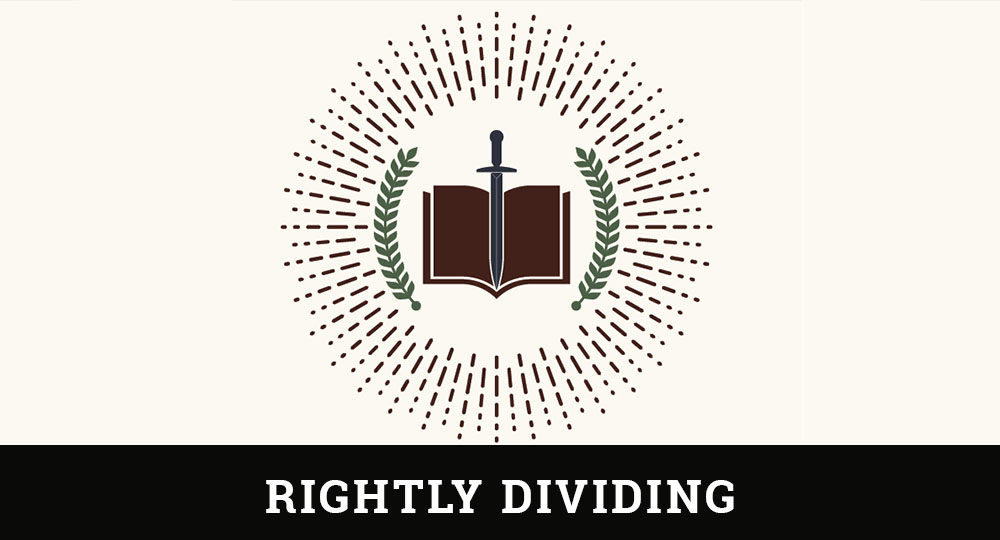Living Truthfully
2 John 1:1–4
A major problem in the first-century church was the proliferation of false teachers. Under the inspiration and leading of the Holy Spirit, the apostle John penned his second and third epistles to address this issue head-on.
These epistles are extremely short, approximately 300 words each in the New King James Version. Second and Third John are more indicative of an informal letter of appreciation and warning, rather than an epistle.
The texts resemble each other in character, distinct appearance, grammar, vocabulary, theme, and arrangement of the letters. The themes of 2 and 3 John are living in truth and love, receiving one another in fellowship, and showing hospitality to true believers while rejecting people teaching error. The sameness of content indicates they were penned closely together, most likely around the same time as 1 John (AD 85–90).
In 2 John, the author reinforced three points addressed in 1 John:
- Christians must have spiritual perception and understanding so they can identify truth from error when it is taught in their churches.
- Christians must live according to the truth of Christ’s teaching, or they will be unable to testify of their love for Him. Only by living in Christ’s love and obeying God’s Word can Christians discern whether a teacher is true or false.
- Christians must open their homes to other believers and show hospitality but close their homes to false teachers who spread lies about Christ and His teachings.
The message of this epistle is extremely relevant and especially needed today, as false doctrine and apostasy are inundating churches around the world.
The Author
The author identified himself not by name but simply as “The Elder” (2 Jn. 1). In the first-century church, an elder (Greek, presbuteros) was an overseer (equivalent of a bishop) and held a position of rank and authority.
There were two types of elders: (1) ruling elders and (2) those who labored in the Word of God and doctrine (1 Tim. 5:17). Elders are servants chosen by God to function as undershepherds for the Lord and stewards who administer the affairs of a local church.
The author is not identified in either 2 or 3 John. Consequently, many scholars throughout history have been reluctant to accept these books as Scripture. Not all agree John was the author. In analyzing the letters, however, it is evident they were written by the same individual, most likely the apostle John.
A number of church fathers in the first and second centuries recognized John as the author of 1 John, which probably makes him the author of 2 John as well because of its similarity in style, vocabulary, and message (more than half of the contents also appears in 1 John).
For example, Clement of Alexandria (AD 150–215) and Irenaeus (AD 130–202) quoted from 2 John, indicating they accepted these epistles as being written by the apostle and considered them divinely inspired. Also, the author’s authority far exceeds that of an overseer in the first-century church.
Both internal and external evidence highly favor John as the author. Today most conservative biblical scholars maintain that John wrote 1, 2, and 3 John.
The Addressees
Second John is addressed to “the elect lady and her children” (v. 1). Commentators differ over the meaning of this phrase. Some believe it should be taken figuratively as referring to the church at large or a local church. Others believe John was addressing a specific woman and her household.
The latter view seems correct because nothing in the letter mentions a particular church, and the author also referred to the woman’s sister (v. 13). It was not unusual for women in the early church to be recognized for their commitment and service or for them to receive personal greetings, as when Paul greeted Priscilla, Phoebe, and Mary (Rom. 16:1–6).
Third John is addressed to “the beloved Gaius” (v. 1). John warned him to expose Diotrephes, who loved to have the preeminence, seized power in the church, and refused to receive the teachers or teachings Paul sent to the church. Gaius was encouraged to follow Demetrius’s example.
In other words, 2 John warns believers not to receive heretics into their homes or churches, while 3 John encourages Gaius to fellowship only with brothers in Christ who have a good testimony within the church.
The Author’s Adoration
The apostle John expressed great tenderness and care toward the “elect lady” and her children, “whom I love in truth, and not only I, but also all those who have known the truth, because of the truth which abides in us and will be with us forever” (2 Jn. 1–2). What do we know about this Christian woman to whom John addressed his letter? One commentator wrote the following:
Clearly she was some well-known Christian lady, apparently a widow, known for her exemplary character and Christian hospitality. She was probably a lady of some means, having a house large enough to entertain traveling preachers. It is probable that her house was the meeting place for the church in her community, according to the custom of those days when as yet there were no separate church buildings. She had a family of grown children, at least some of whom John had learned to know as devout Christians. She had a sister, perhaps now deceased, with whose children John was personally acquainted; he was in contact with them at the time of the writing of this letter and includes their greetings to their aunt. Her place of residence is unknown, but apparently she lived not too far from Ephesus, and John had previously visited her home. Beyond this, Scripture is silent about her.1
By addressing “her children,” John implied he knew them and was aware of their solid commitment to the Lord. He expressed strong feelings of endearment to them, “whom I love in truth.” John used the Greek word agapao, meaning a self-sacrificing love that goes far beyond friendship. His love was grounded in “the truth”—what is revealed in and by the incarnate Christ. Jesus had taught him the truth of the gospel, and the Holy Spirit had embedded it in his heart.
The type of love John expressed for the elect lady and her family is something all possess who truly receive Jesus Christ and walk in His truth: “and not only I [possess it], but also all those who have known the truth” (v. 1). Heretics do not possess such love or such truth.
John confirmed two things about the truth Christians possess through the indwelling Holy Spirit:
First, “the truth…abides in us” (v. 2). God’s revelation of Himself is something every believer possesses as his own reality. The Holy Spirit, who is the “Spirit of truth” (Jn. 14:17; 15:26), continually abides in Christians and makes God’s truth a reality in their lives and character. The unsaved world cannot see, know, or receive Him (cf. Jn. 14:16–17; 16:3).
This truth is all the teaching Christ presented about God the Father and Himself, as opposed to the lies of false teachers.
Second, the indwelling Spirit of truth “will be with us [all believers] forever [eternally]” (2 Jn. 2). This fact gives great assurance and comfort to those who are born again and reveals their position and relationship to the triune God.
Unlike other New Testament epistles that wish blessing on all believers in Christ, 2 John announces that those possessing God’s love and truth will experience His grace, mercy, and peace. “Grace, mercy, and peace will be with you from God the Father and from the Lord Jesus Christ, the Son of the Father, in truth and love” (v. 3).
The phrase will be emphasizes that true believers in Christ will encounter God’s ongoing blessing, manifested in three ways:
- Grace, God’s unmerited favor, is freely granted to unworthy humanity, but especially to believers in Christ.
- Mercy speaks of God’s compassion and pity on people suffering through troubles, including physical or mental sorrow, anxiety, or pain.
- Peace refers to a believer’s calm, tranquil, or undisturbed mental state, even in the midst of trials. Peace should flow naturally to someone who has experienced God’s grace and mercy.
These three blessings are bestowed on believers from both “God the Father and from the Lord Jesus Christ.” The word from establishes the Father and Son as separate persons within the Godhead, yet having the same essence and attributes (cf. Jn. 10:30). John further confirmed Jesus’ identity by calling Him “the Son of the Father” (2 Jn. 3).
Elsewhere Scripture identifies Jesus as the eternal Son of God, meaning He always existed in eternity past and now has been manifested in human flesh. Christ’s deity is inseparable from His eternality.
The blessings of “grace, mercy, and peace” can only function properly in “truth and love” (v. 3). This is the only time truth and love are mentioned together in the New Testament. Christians who have experienced these three blessings must manifest them to the unsaved world in truth and love, which play a major role in church unity and form a powerful testimony to the truth and love that emanate from the Father and Jesus Christ His Son.
John was impressed with the elect lady’s children: “I rejoiced greatly that I have found some of your children walking in truth, as we received commandment from the Father” (v. 4). The word some may mean that John only came in contact with a few of her children, or that not all were “walking in truth.”
The word truth (used five times in the first four verses) lacks the definite article, thus referring to the truthful character and habitual conduct practiced in a believer’s daily life.
Notice four truths about the elect lady and her children’s conduct: (1) They conformed to commands received from God the Father and Jesus Christ His incarnate Son; (2) they did not consider John’s teaching an option, but a divine commandment;(3) their lives manifested truth and love in total obedience to God’s commands; and (4) others, especially John, within the church witnessed their commitment.
Does your testimony bear the same witness of God’s truth and love for Christ? If not, it might be time to make some changes in your life.
ENDNOTE
- D. Edmond Hiebert, The Epistles of John: An Expositional Commentary (Greenville, SC: Bob Jones University Press), 291.








